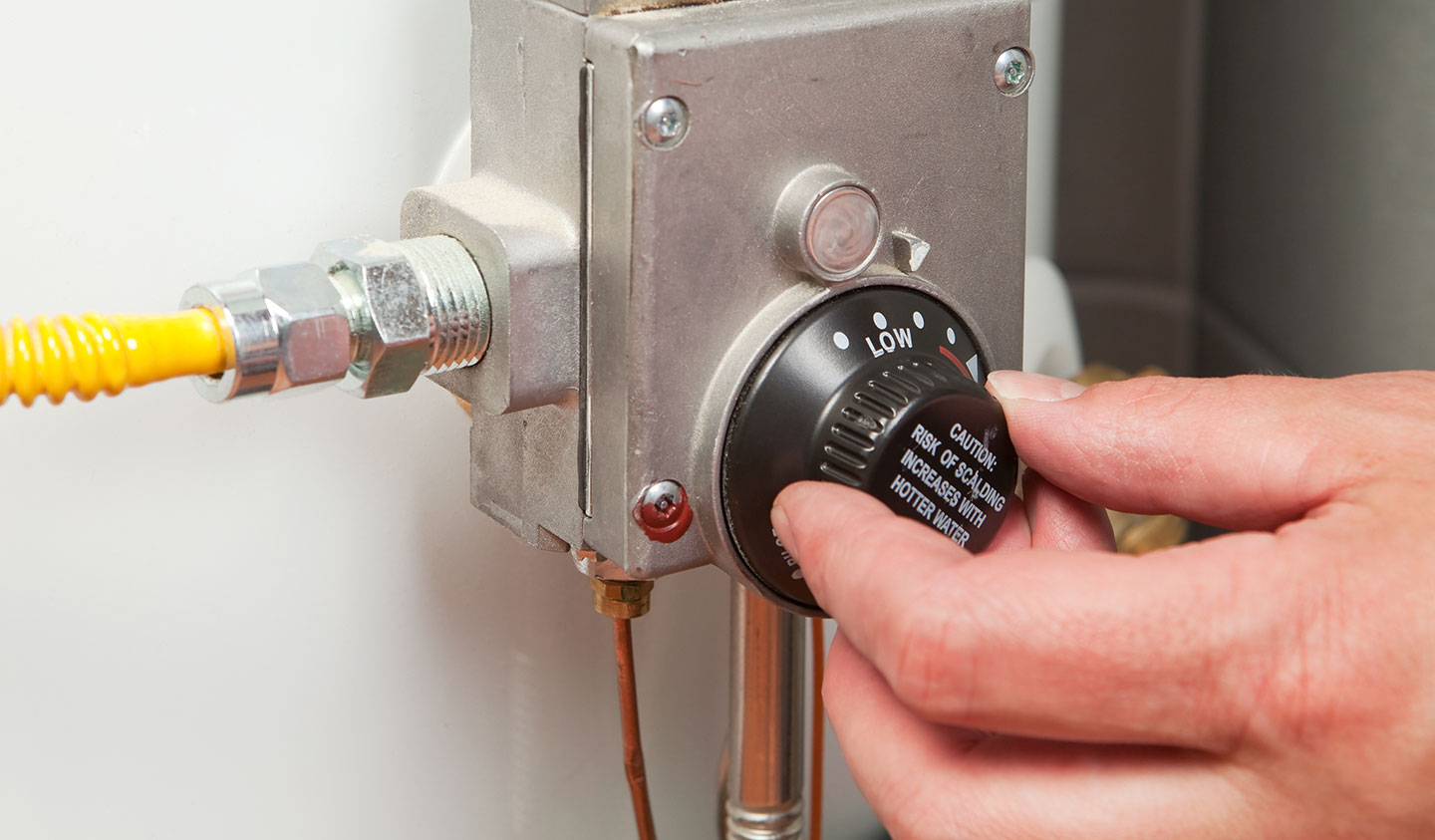Your water heater temperature may not be something you think about very often, but it is actually much more important than you may realize to keep your water heater set at the right temperature. Your water heater temperature refers to the temperature to which your water heater heats the water that flows into it and therefore controls the temperature of the hot water that flows from your water heater into your home. Although it may be something that is not typically at the top of our to-do list, there may be benefits to lowering water heater temperature.
It is quite possible that your water heater temperature may be too high. This can be problematic for many reasons, and there are multiple advantages associated with lowering your water heater temperature to a degree that is safe and prevents bacterial growth while also saving energy and avoiding excessive wear and tear on your water heater. Keep reading to learn more about the optimal temperature for your water heater, why you may want to consider lowering your water heater temperature, and how to adjust your water heater temperature.
Why Lower Your Water Heater Temperature?
There are many benefits of lowering your water heater temperature. These benefits include extending the lifespan of your water heater as well as helping you save significant amounts of energy and money on household bills.

Why Lower Your Water Heater Temperature?
When your water heater temperature is set too high, a significant amount of heat is lost through standby heat loss—which both wastes energy and drives up your gas or electric bill. If the water inside your water heater is too hot, mineral sediment can also build up inside your water heater and cause your water heater to wear out and need to be replaced much more quickly than it should. A water heater temperature that is too high can even increase the risk of dangerous scalding accidents in your home, which can result in second- or even third-degree burns—especially for children and seniors.
What is the Optimal Water Heater Temperature?
There is some debate over the optimal water heater temperature. It is important not to set your water heater temperature too low or too high. However, it is a much more common problem to have your water heater temperature set too high rather than too low. Setting your water heater temperature too high can lead to any or all of the above consequences, including excessively high household bills and wasted energy.
The optimal temperature range for your water heater is considered to be somewhere between 120 and 140 degrees Fahrenheit. Setting your water heater temperature to 120 degrees Fahrenheit keeps the hot water that flows into your home at a safe temperature while maximizing the benefits of lowering your water heater temperature.
How to Lower Your Water Heater Temperature
If your water heater temperature is too high and you want to lower it to a more optimal temperature, you need to know how to adjust the temperature of your water heater. Fortunately, lowering your water heater temperature is a very simple process that you can easily do on your own without the help of a professional.
Adjusting your water heater temperature is simple, but it is not necessarily the most intuitive process. The dial that controls the temperature at which your water heater is set is likely not labeled with any numbers, so the process of adjusting your water heater temperature may require some trial and error. Once you reach your desired water heater temperature, it is a good idea to mark the place on your water heater’s dial that corresponds to that temperature for future reference.
If you have a gas water heater, your water heater dial is likely located in plain sight near the bottom of your water heater tank next to its gas valve. If you have an electric water heater, you may have to remove a screw-on panel on the water heater to access your water heater’s thermostat dial. Once you find the thermostat dial of your water heater, lowering your water heater temperature is as simple as twisting the thermostat dial to the left.
Keep in mind that every water heater is different. If these instructions don’t work for you, you may need to look into how to adjust the temperature of the specific water heater that you own. Always consult your water heater owner’s manual before attempting to adjust the temperature of your water heater to avoid damaging your water heater or incorrectly adjusting its temperature. After adjusting the temperature of your water heater, you should also wait a few hours and then test the temperature of the tap water in your home with a reliable thermometer to ensure that you successfully lowered your water heater temperature to your desired temperature.


